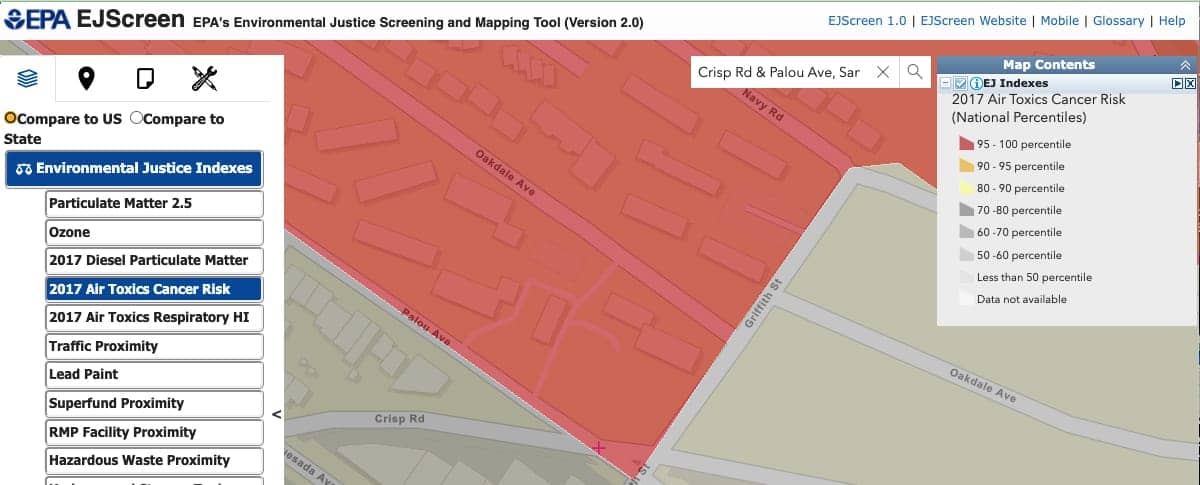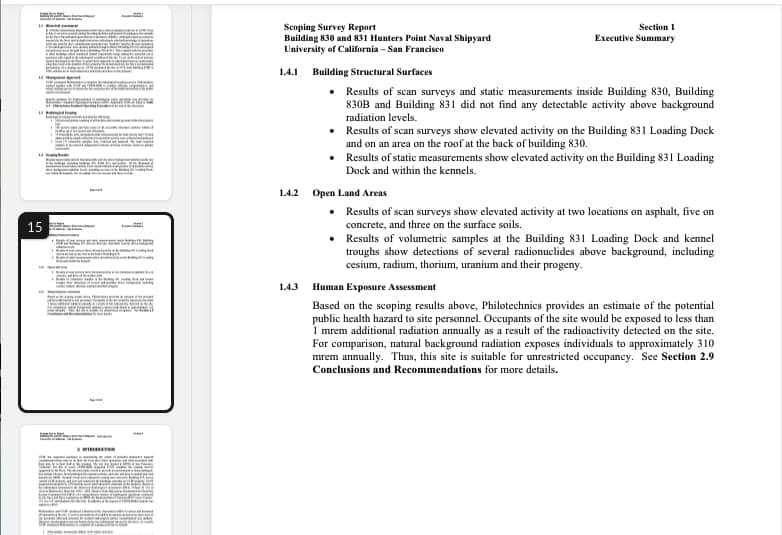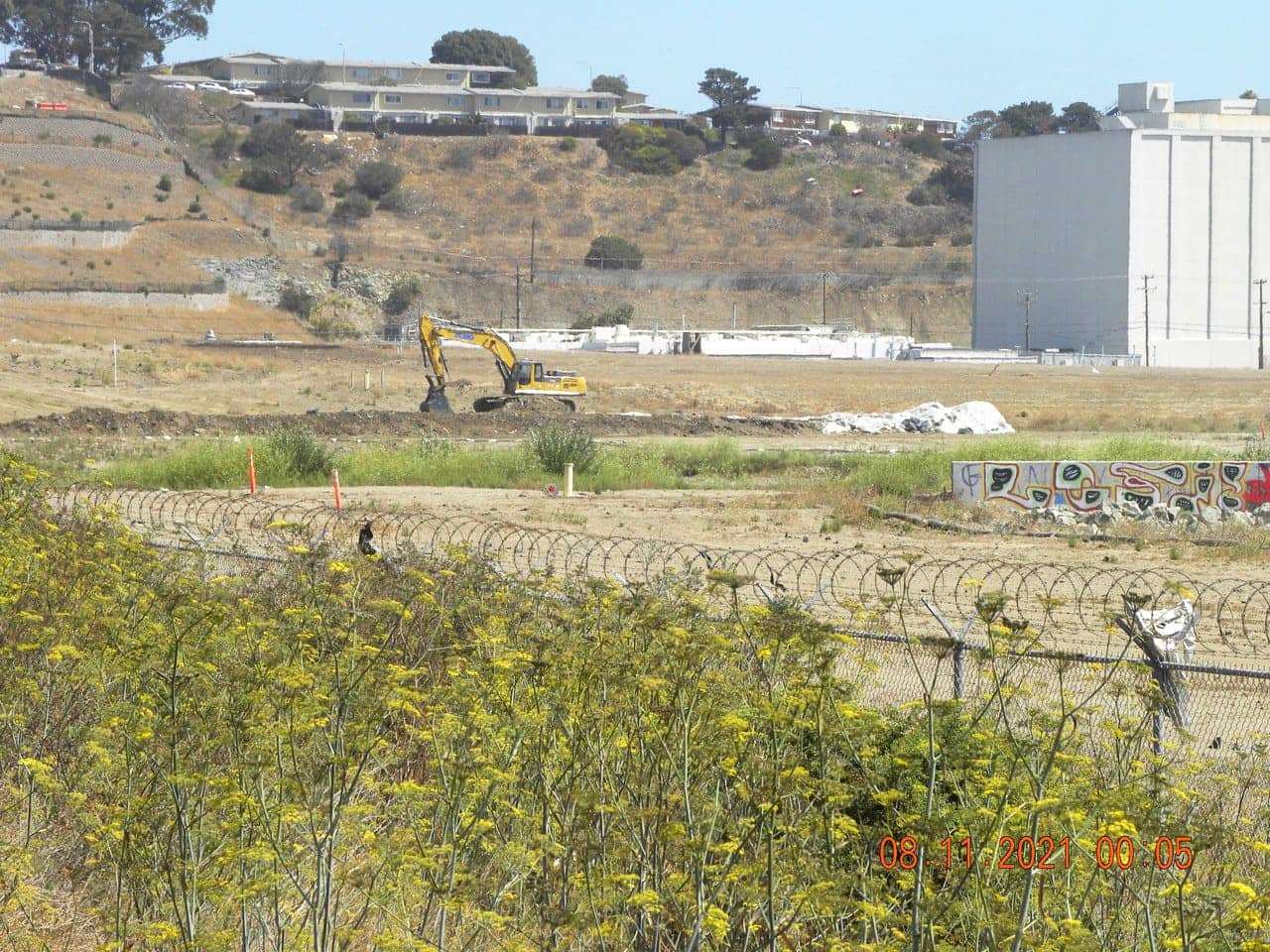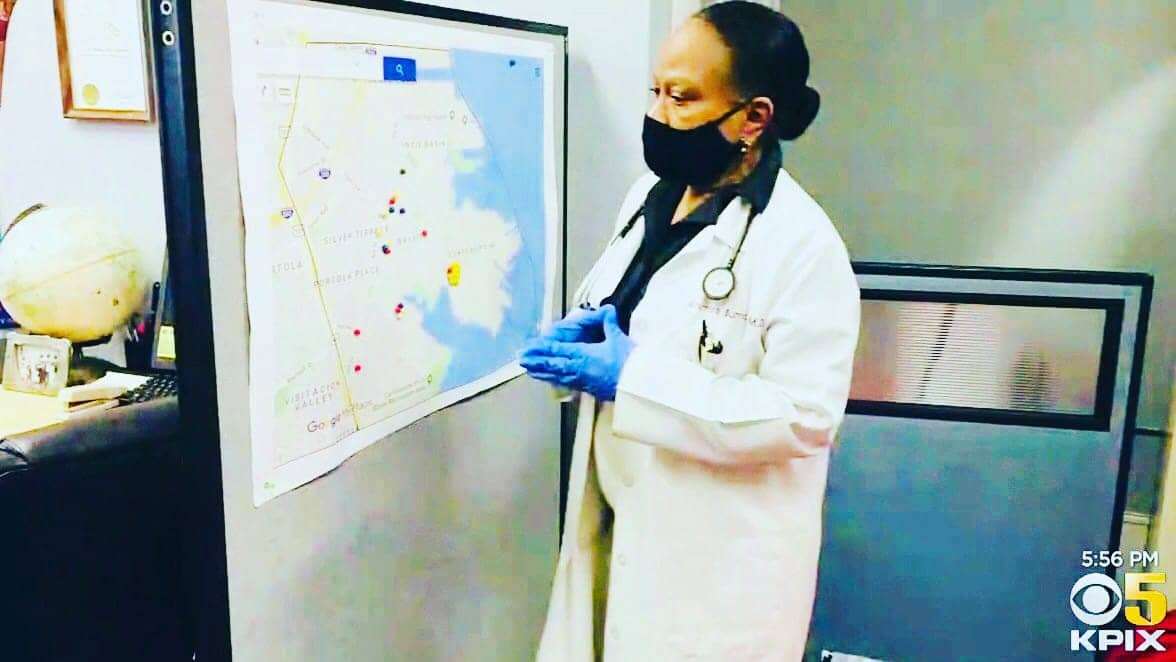
by Dr. Ahimsa Sumchai, Health and Environmental Science Editor
What follows is a geospatial mapping update of the cancer cluster epicentered around the historic main entry to the system of federal Superfund sites at the Hunters Point Naval Shipyard, Parcel E-2 Industrial Landfill and Building 800 series campus of the US Naval Radiological Defense Laboratory.
Hunters Point Biomonitoring’s “Breast Cancer Necklace” expanded in May to include a woman diagnosed with breast cancer at age 27 while living at the intersection of Third Street and Quesada Avenue.

Her father, at the same address, was diagnosed with prostate cancer and died in 2015 of colon cancer. Her mother, a nonsmoker, died of a chronic fibrosing lung disease caused by exposure to toxic air contaminants.
The intersection of Third and Quesada is half a mile west of the fence line separating a densely populated neighborhood from the radiation contaminated shoreline of the Hunters Point Naval Shipyard, the Parcel E-2 Industrial Landfill and the campus of the US Naval Radiological Defense Laboratories. The western fence line at the boundary with the federal Superfund system has emerged as a hotspot in the HP Biomonitoring Radiogenic Cancer Cluster.

A 4-year-old boy living on the Hunters Point hilltop overlooking the former headquarters of the US Naval Radiological Defense Laboratories died of brain cancer in April 2022. HP Biomonitoring has identified a cluster of brain tumors called gliomas in this region. Gliomas have been proven, in human and animal studies, to be induced by exposure to radioactive and carcinogenic heavy metals.
The brain tumor cluster includes the minister of a church located 500 feet west of deep soil excavations and heavy equipment operations conducted by both the Navy and developers Lennar and FivePoint at Parcel A-2 and E-2. It also includes an Oakdale Avenue homeowner, former elected member of the shipyard’s Restoration Advisory Board (RAB) and SF Chronicle newspaper employee.

Tony Montoya, former president of the Police Officers Association, underwent emergency brain surgery to relieve life-threatening compression of his brain stem by a tumor presumed to be a glioma while working in Building 606 on the Parcel E shoreline.
Saul Bloom, executive director of Arc Ecology, died of a glioblastoma in 2016 after documenting in the legal journal Verdict his exposure to carcinogenic heavy metals while working at Astoria Metals on Drydock 4. Bloom successfully sued the Navy and ultimately shut down the hazardous operations of Astoria Metals after decades-long civil action.

In April, Community organizer Tiffany Williams disclosed to ABC News that she was diagnosed with a brainstem glioma at age 29. Williams grew up on Yosemite Avenue adjacent to Yosemite Slough and lives on the Hunters Point hilltop. The family of the 4-year-old boy who died of brain cancer in April are neighbors.
Additionally, multiple meningiomas and tumors of the pituitary and auditory nerve are documented in the HP Biomonitoring brain tumor cluster.
SF Bay View Health and Environmental Science Editor Ahimsa Porter Sumchai, MD, PD, founder and principal investigator for the Hunters Point Community Biomonitoring Program, founding chair of the Hunters Point Naval Shipyard Restoration Advisory Board’s Radiological Subcommittee and contributor to the 2005 Draft Historical Radiological Assessment, can be reached at AhimsaPorterSumchaiMD@Comcast.net. Dr. Sumchai is medical director of Golden State MD Health & Wellness, a UCSF and Stanford trained author and researcher, and a member of the UCSF Medical Alumni Association Board of Directors.





